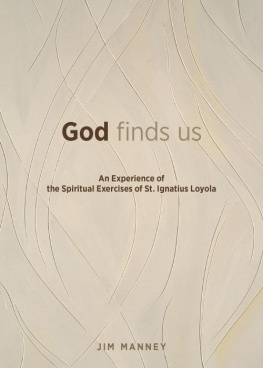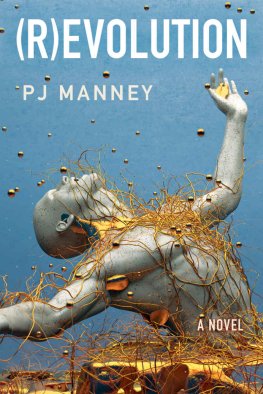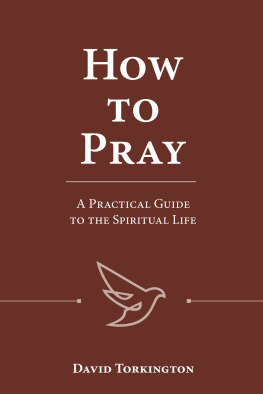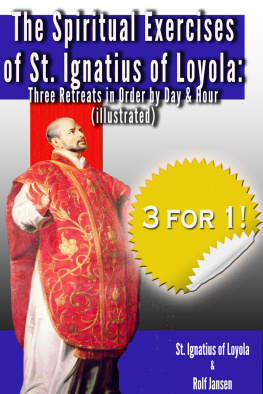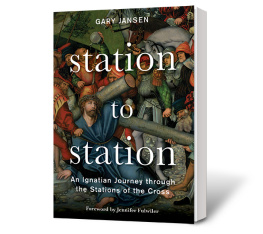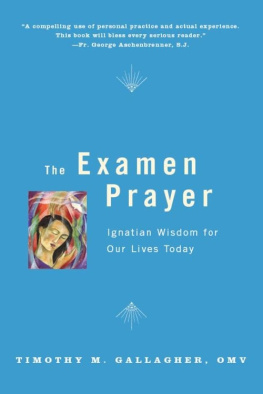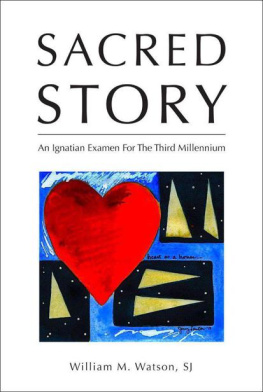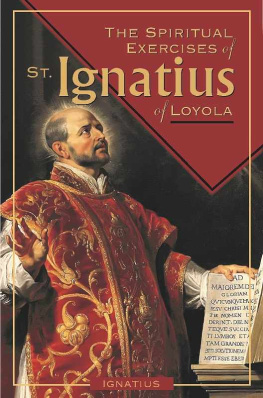
3441 N. Ashland Avenue
Chicago, Illinois 60657
(800) 621-1008
www.loyolapress.com
2013 Loyola Press
All rights reserved.
Scripture quotations contained herein are from the New Revised Standard Version Bible: Catholic Edition, copyright 1993 and 1989 by the Division of Christian Education of the National Council of the Churches of Christ in the U.S.A. Used by permission. All rights reserved.
Unless otherwise noted, quotes from the Spiritual Exercises are from The Spiritual Exercises of St. Ignatius: Based on Studies in the Language of the Autograph by Louis J. Puhl, SJ (Chicago: Loyola Press, 1951).
Where indicated, material from the Spiritual Exercises is taken from Understanding the Spiritual Exercises: A Handbook for Retreat Directors by Michael Ivens, SJ (Herefordshire, U.K.: Gracewing, 1998). Used by permission.
Cover art credit: Joe Ginsberg/Stockbyte/Getty Images.
Library of Congress Cataloging-in-Publication Data
Manney, Jim.
God finds us : an experience of the spiritual exercises of St. Ignatius Loyola / Jim Manney.
p. cm.
Includes bibliographical references.
ISBN-13: 978-0-8294-3827-7
ISBN-10: 0-8294-3827-0
1. Ignatius, of Loyola, Saint, 1491-1556. Exercitia spiritualia. 2. SpiritualityCatholic Church. 3. Spiritual exercises. I. Title.
BX2179.L8M326 2013
248.3dc23
2012043285
eBook ISBN: 978-0-8294-3828-4
13 14 15 16 17 EPUB 5 4 3 2 1
A few years ago, I made the Spiritual Exercises of St. Ignatius Loyola with the help of a cheerful Jesuit named Dennis. I had always thought of the Exercises as the spiritual equivalent of Navy SEAL training or hiking the Appalachian Trailsomething for highly trained, disciplined, ambitious people who arent satisfied with anything short of the toughest challenge. Im not one of those people. Im a baseball fan in the Midwest with a mortgage, a family, two cars, and a full-time job. Im a pretty ordinary guy, but I made the Exercises anyway, and they did me a lot of good. If I can make the Spiritual Exercises, just about anybody can. Thats one reason I wrote this bookto plant the idea in your mind that the Spiritual Exercises might be helpful for you, too.
The Exercises dont feature theology, doctrine, devotional practices, or other churchy stuff. Ignatius assumes a Christian outlook; he was a European Catholic writing in the sixteenth century, after all. But Ignatius was more interested in what you feel than what you think. His Exercises aim for a changed heart more than a changed mindalthough its certainly true that youll think about things differently as a result of making the Exercises. He built the Exercises around certain experiences that led him to the ideas and themes that he thought would bring about a conversion of the heart. These themes are my gateway into the Exercises. Ive built this book around them. By explaining them, I hope to give a sense of what the Exercises are about.
Im not going to discuss everything thats in the Exercises with the same degree of detail. Ill concentrate on the major themes; I wont cover everything. Still, I hope that reading this book will give you a sense of what making the Exercises is like. Maybe it can be a kind of retreat for you. To that end, Ive drawn on my own experiences of the Exercises, and I talk about the themes in roughly the order that youd take them up if you were doing the Exercises yourself.
I hope you do that. Im an unabashed fan of the Spiritual Exercises. I think they are very modern. They fit the temper of our times well. But they dont fit the times perfectly; if they did, they wouldnt be worth the trouble. In fact, they appeal especially to people who dont feel completely at home in the world as it is, people who arent satisfied with the conventional wisdom, people who are looking for something different. If thats you, read on.
What are the Spiritual Exercises? The question isnt as easy to answer as you might think. Two different things are called the Spiritual Exercises. One is a book, The Spiritual Exercises, which you can hold in your hands and read. These days you can also read it on your Kindle or listen to it on your MP3 player. The book is a guide for the other Spiritual Exercisesa prayer-retreat experience. That experience is my main focus in the pages to come. But lets look at the book first.
The Spiritual Exercises was written in spare, dense language in the sixteenth century by St. Ignatius Loyola, a remarkable spiritual innovator and one of the true giants of Christian history. I first picked up the book when I was in college, but I didnt get very far. No wonder: Ignatius didnt write the book for people like me who were looking for some good spiritual reading. He wrote it for the spiritual directors who guide people on this retreat. In fact, Ignatius didnt want people who are making the Exercises to read too much of the book. Its just as well. To be frank, the book is a hard slog. Ignatius was a man of immense and manifold talents, but a felicitous prose style wasnt one of them. You might say of The Spiritual Exercises what Mark Twain said of one of the novels of Henry James: Once you put it down, its hard to pick it up again.
The book originated in Ignatiuss personal experiences in prayer over an eleven-month period in the town of Manresa in northeastern Spain. He developed the book over a period of about twenty years, revising and editing as his spiritual life deepened and as he gained experience in helping others have the same life-changing experience he had had. The book contains exercises, reflections, prayers, scenarios, Scripture readings, and other material for an intensive personal encounter with Jesus. This encounter is the other Spiritual Exercisesthe prayer-retreat experience that is my main focus. This experience is a bit hard to describe because everyones experience is uniquely his or her own, but heres my stab at a definition: The Spiritual Exercises is a structured program of prayer, reflection, and self-scrutiny, usually done with the help of a spiritual director, with the goal of allowing God to free us to love and to serve in the concrete circumstances of our lives.
For a long time (Im talking centuries here), someone like me would never have gotten near the Spiritual Exercises. They were the spiritual equivalent of Navy SEAL traininga grueling, intense thirty-day retreat in a rural retreat house, experienced in silence, cut off from the outside world. The people who made the Exercises were mainly clergy and religious, those considering a religious vocation, and those laypeople with the desire and wherewithal to get away for thirty days. But Ignatius envisioned other ways to make the Exercises. He was still a layman when he developed them, and the first people to make the Exercises were also laypeople. Ignatius told spiritual directors to be creative in adapting the Exercises to peoples circumstances.
In recent years, spiritual directors have done just that. New forms of the Exercises have been developed, and more people have been making them than ever before. People make the Exercises for many reasons. Many are making big decisionsabout marriage, career, religious vocation, and the like. Many have a restless feeling that theyre ready for something new; perhaps the kids have moved out, or retirement is drawing nearthey sense that a new chapter in their life is about to begin. Many people make the Exercises simply because they want to experience more of God. Thats why I decided to do them.

